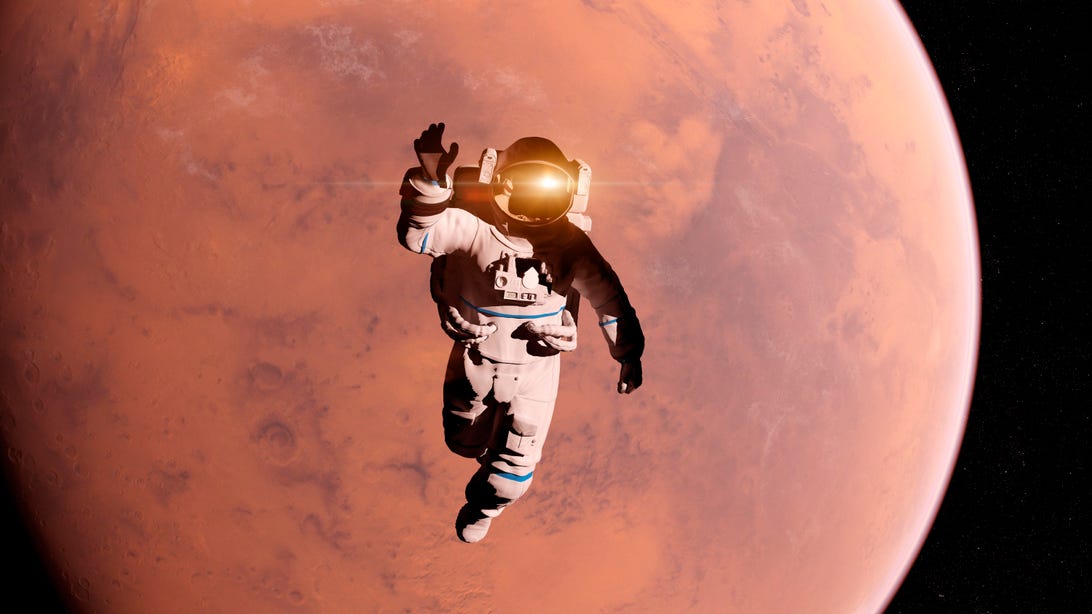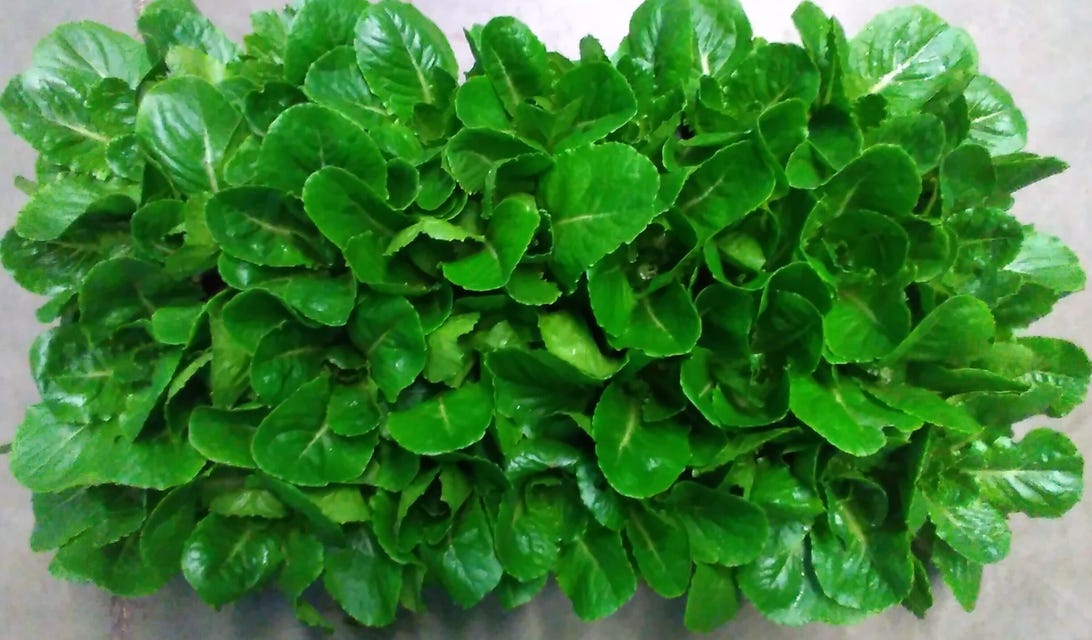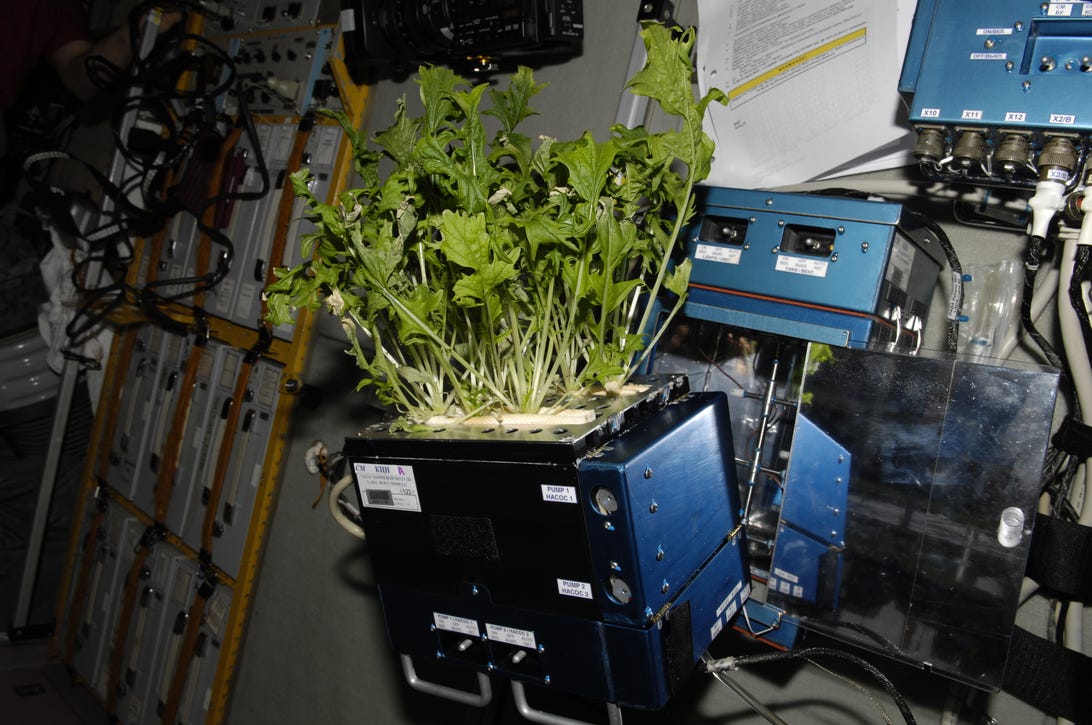

A distinct more or less lettuce may just lend a hand someone headed to Mars keep wholesome.
Sciepro/Science Photograph Library
The 12 months 2030 may mark when people after all take their first steps on Mars — in step with NASA’s timeline, this is. Elon Musk’s contemporary estimate falls 12 months previous, in 2029. However without reference to when it occurs, we all know something for sure.
Mars-bound astronauts could have a protracted adventure via area forward of them, subjected to microgravity for months. The ones prerequisites will put the pioneers vulnerable to in depth bone loss. However there is also a delectable, crunchy and wholesome answer.
On Tuesday, on the spring assembly of the American Chemical Society, scientists introduced their blueprint for a brand new transgenic lettuce. It is very similar to the salad element we all know and love, however genetically engineered to forestall bone loss — and it may be grown proper in outer area. Consuming the plant can be like gathering a online game power-up that protects in opposition to the threats of microgravity.
“It is a quite simple and cost-effective method to make a healing,” Karen McDonald, a chemist on the College of California, Davis and one of the vital researchers at the back of the plant, mentioned in a Tuesday media briefing.

This lettuce produces a bone-stimulating hormone that might lend a hand mitigate bone loss in area and on Earth.
Kevin Yates
On Earth, our frame maintains a steadiness between breaking down minerals in our bones and repairing issues to ensure we are all the time getting the vitamins we want. In microgravity, regardless that, this equation loses its unity. Bone mineral breakdown nonetheless occurs, however next maintenance can not stay up, which results in lack of total bone density.
To counteract such bone loss in area, astronauts ceaselessly workout on their spacecraft. The Global Area Station, for example, has a bicycle, treadmill and particular weightlifting software. However within the new find out about, researchers notice that there hasn’t been sufficient proof to beef up that workout is enough to stave off bone density relief.
That is why area explorers additionally raise syringes of drugs that experience what is referred to as a human parathyroid hormone, or PTH, within the combine. Principally, PTH is helping stimulate bone formation — however this treatment has its personal downsides. It calls for you to take injections each and every unmarried day, which is not ideally suited. With the crew’s new lettuce concoction, alternatively, on a daily basis “an astronaut would wish to consume about 8 cups of lettuce with the intention to get the correct dose,” Kevin Yates, who is additionally a chemist on the College of California, Davis, mentioned within the media briefing.

Astronaut Steven Hawley runs on a treadmill at the middeck of the gap travel Columbia. The workout is a part of an experiment to guage the Treadmill Vibration Isolation Machine as deliberate {hardware} for the Global Area Station.
NASA
Getting ready lettuce for area commute
“We made up our minds to make use of lettuce as a result of lettuce is a plant that is been grown at the Global Area Station,” McDonald mentioned. “Additionally it is a plant that is very productive in the case of generating seeds, so our concept is if we created a transgenic plant, one seed can generate 1000’s of seeds.”
And in contrast to same old astronaut drugs, the crew’s transgenic lettuce is synthetically engineered to have a gene that correlates with a slight variation of PTH. This transformation is a mix of PTH and a protein referred to as — get ready for a mouthful — the fragment crystallizable area of a human antibody. In many various tactics, Fc is helping PTH thrive within the human frame.

Mizuna lettuce rising aboard the ISS sooner than being harvested and frozen for go back to Earth.
NASA
As soon as the crew had their artificial gene able to move, they used a commonplace gene encoding solution to switch it into the genome of normal lettuce, they defined, then grew lettuce vegetation from the seeds of the primary lettuce, harvested seeds from the ones vegetation, and the tale is going on. Plus, to ensure PTH-Fc effectively entered the vegetation, they may be able to take out proteins from the rising lettuce and analyze them.
“I do not believe we will have the ability to do deep area exploration with a group of people with out this type of generation,” Yates mentioned. “It isn’t simply the lettuce by itself, it is a part of a broader frame of mind the place we attempt to use each and every useful resource that we’ve got to be had to us, whether or not it is on spacecraft or the moon or Mars.”
And excluding area exploration, the researchers emphasize that their invention may also be given to someone predisposed to bone loss. “We’d like tactics to supply therapeutics in a easy model, and likewise in a lower-cost means, and I feel the usage of vegetation to make therapeutics, corresponding to PTH-Fc, can be very precious right here on Earth,” Yates mentioned.
Prior to we get to that time, regardless that, the crew emphasizes that they will have to first habits a variety of different exams, corresponding to animal research, scientific trials, drug optimization or even seeing how the plant fares in a space-like atmosphere. Actually, it hasn’t but been tasted by means of people as a result of the ones scientific science hurdles.
Nonetheless, Yates says, “I am hoping that it’s each and every bit as scrumptious as common lettuce and that it’s going to be a just right smash from powdered and dehydrated meals that long-duration area vacationers may in a different way be consuming, more often than not.”
Get the CNET Science newsletter
Unlock the biggest mysteries of our planet and beyond with the CNET Science newsletter. Delivered Mondays.
